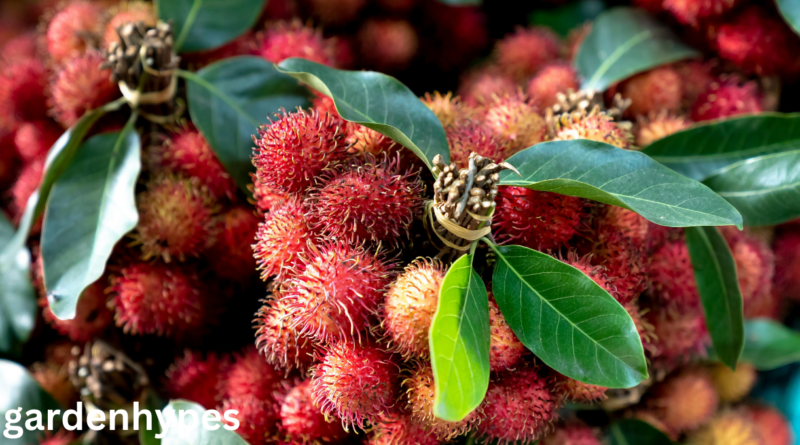Fruits That Look Like Lychee A Visual Guide
You know that moment. You’re strolling through an exotic market or a specialty grocery store, and your eyes land on a familiar sight: a pile of bumpy, reddish-pink, golf-ball-sized fruits. “Fruits That Look Like Lychee !” you think. But wait. The sign says something else entirely. Rambutan? Longan?
It turns out, the lychee has a whole family of lookalikes out there! This world of exotic fruit is full of doppelgängers, and confusing them is a rite of passage for any fruit enthusiast. If you’ve ever been curious, let’s meet the lychee’s twins and cousins. You’ll be a fruit market pro in no time.
click in link Fruits That Look Like Dragon Fruit
1. The Fuzzy Twin: Rambutan
This is the most common mix-up, and for good reason. At first glance, a rambutan is a lychee that decided to get a funky, punk-rock hairstyle.
- Looks: The name says it all—”rambut” means “hair” in Malay. While the lychee has tough, bumpy, and mostly smooth skin, the rambutan is covered in long, soft, flexible red and green spines (hairs). It’s a dramatic and unforgettable look.
- Inside: Peel away the wild exterior, and you’ll find a fruit that looks nearly identical to a lychee: a translucent white, juicy flesh with a single large seed in the center.
- Taste & Texture: The flavor is similar—sweet and floral—but many find the rambutan to be slightly less acidic and a tad creamier than the lychee. The texture is also a bit less firm.
The Quick Tip: If it looks hairy, it’s a rambutan!
2. The Smooth Sibling: Longan
If the rambutan is the flashy sibling, the longan is the shy, understated one. Often called “dragon eye” fruit (because the peeled fruit looks like an eyeball!), it’s a close botanical relative.
- Looks: This is where the confusion kicks in. The longan’s skin is a smooth, tan-brown and brittle, unlike the lychee’s rough red shell. It looks like a small, dusty potato. But because of its similar size and shape, it often gets mistaken for a lychee variety.
- Inside: The flesh is also translucent white and juicy, surrounding a dark seed.
- Taste & Texture: The flavor is distinctly different. It’s less perfumed and tropical than lychee, offering a more mellow, musky sweetness with a hint of honey. The texture is juicier but less firm.
The Quick Tip: Think “longan” for “tan.” If it’s small, round, and has a light brown, smooth shell, you’ve found it.
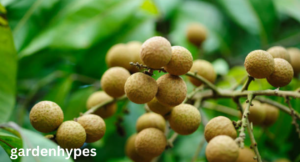
3. The Giant Cousin: Pulasan
The pulasan is like the lychee and rambutan’s bigger, plusher cousin who doesn’t get out much. It’s rarer outside of Southeast Asia but a real treat to find.
- Looks: It resembles a rambutan but its “spines” are shorter, thicker, blunter, and feel more like fleshy bumps or studs. The skin is also often a deeper, darker red.
- Inside: The fruit inside is the big reveal. It looks similar but often clings to the seed less, making it easier to eat. Some varieties have a seed that splits open easily.
- Taste & Texture: Often described as richer and sweeter than both the rambutan and lychee, with a flavor closer to a super-sweet grape.
The Quick Tip: Shorter, stubby “spines” and a deeper red color? You’ve likely found a pulasan.
click in link Fruits That Look Like Dragon Fruit
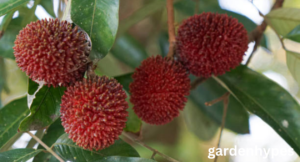
4. The Wildcard: Spanish Lime (Mamoncillo)
This one is a bit of a stretch looks-wise, but it often gets grouped in because of its size and the way you eat it. Botanically, it’s not related at all!
- Looks: Spanish limes grow in clusters and have a smooth, green, leathery skin that you break open with your teeth. They look more like small, unripe limes or olives than lychees.
- Inside: The big difference is inside. Instead of a single seed, the orange-salmon colored flesh clings tightly to a large pit, more like a mango. You suck the juicy pulp off the seed.
- Taste & Texture: The taste is a fascinating blend—tangy and sour like a lime upfront, with a sweet, tropical finish. The texture is pulpy, not crisp like lychee.
The Quick Tip: If it’s green and you pop it open with your teeth to suck the pulp off a big seed, it’s a Spanish lime.
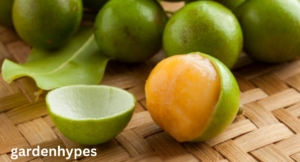
5. The “Uncanny Valley” Fruit: Jabuticaba
Okay, this one doesn’t look like a lychee on the tree (it grows directly on the trunk, which is wild!), but the harvested fruit can cause a double-take.
- Looks: A jabuticaba is a small, round, deep purple-to-black berry with a smooth, thick skin. In a bowl, its size and shape can vaguely resemble a dark lychee.
- Inside: Cutting it open reveals a surprise: a white, gelatinous, and incredibly sweet pulp that contains several small seeds, unlike the lychee’s single seed.
- Taste & Texture: The flavor is a unique and powerful burst of grape-like sweetness, often used for jams and wines.
The Quick Tip: Deep purple, almost black, smooth skin? It’s a jabuticaba.
click in link Fruits That Look Like Dragon Fruit
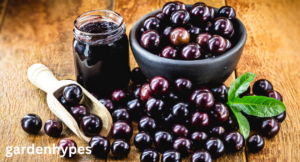
faqs
Q: What is the most common fruit mistaken for a lychee?
A: The rambutan is most frequently confused with lychee due to its similar size and red color, though it has distinctive soft, hairy spines.
Q: How can you tell a lychee from a rambutan?
A: Lychees have a bumpy, rough, and leathery texture. Rambutans are covered in long, soft, hairy spines (the name comes from the Malay word for “hair”).
Q: What does longan fruit have in common with lychee?
A: The longan is part of the same soapberry family. It has similar translucent, juicy flesh and a single seed, but its outer shell is smoother and tan-brown.
Q: Are these lychee look-alikes related?
A: Yes, many are! Lychee, rambutan, longan, and pulasan are all members of the Sapindaceae (soapberry) family, which explains their similar structure.
Q: Which one is the sweetest?
A: Taste is subjective, but many find the pulasan to be sweeter and less acidic than the lychee, with a flavor often compared to a grape.
